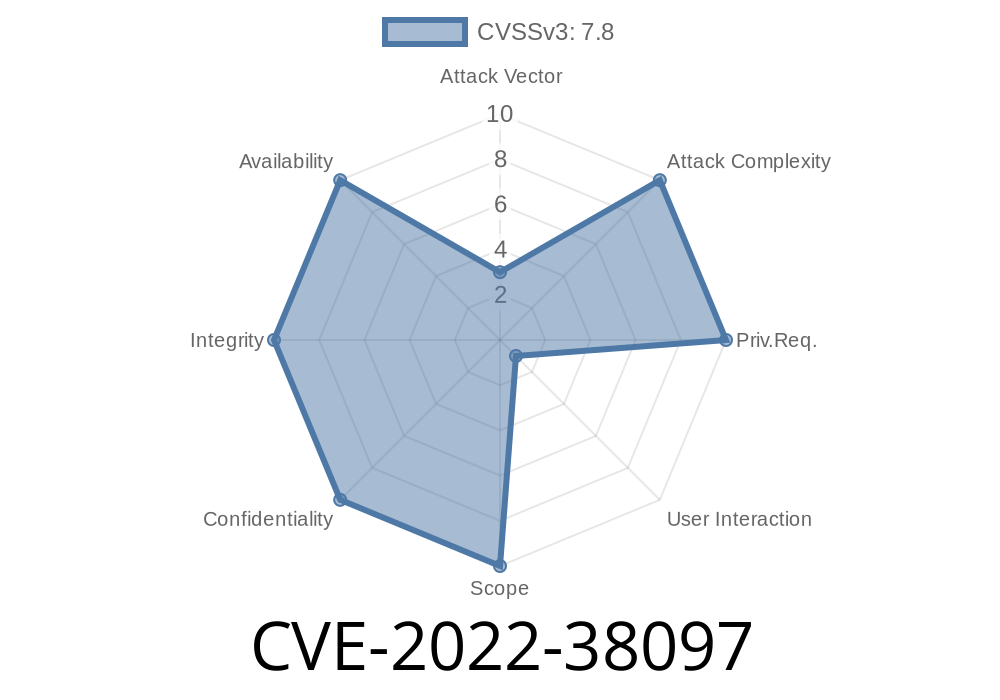Your trusty PDF reader just got a little less trustworthy. A new vulnerability, identified as CVE-2022-38097, has been discovered in Foxit Software's PDF Reader version 12..1.12430. This severe security flaw exists in the JavaScript engine of the popular PDF reader and can potentially lead to arbitrary code execution. In this post, we will delve into the root cause of the vulnerability, the conditions required for exploitation, and what you can do to defend against it.
The Vulnerability: Use-After-Free
The core of the issue lies in a use-after-free vulnerability in Foxit PDF Reader's JavaScript engine. What is a use-after-free vulnerability, you ask? It occurs when a program continues to use a pointer after the associated memory has been freed, leaving it susceptible to malicious manipulation. In the case of CVE-2022-38097, the vulnerability is triggered by prematurely destroying annotation objects in a crafted PDF document.
Here's a snippet of code demonstrating the flaw
function vulnerableFunction() {
var annotation = new Doc().getAnnot(, "someId");
annotation.destroy();
// ... other unrelated code ...
annotation.operation(); // unsafe because "annotation" was already destroyed
}
As seen above, the code first creates an annotation object and then immediately destroys it. Later in the function, the code tries to perform an operation on the destroyed object, leading to memory corruption and potentially resulting in arbitrary code execution.
There are two primary ways an attacker can exploit CVE-2022-38097
1. Social Engineering: The attacker needs to trick users into opening a malicious PDF document specifically crafted to trigger the vulnerability. This kind of attack typically relies on phishing emails or convincing users to download files from untrusted sources.
2. Malicious Websites: If a user visits a specially crafted, malicious site with the browser plugin extension enabled, the attacker can exploit the vulnerability. This scenario emphasizes the importance of disabling unnecessary browser plugins and ensuring you only visit trusted websites.
For those who prefer a more in-depth, technical analysis, the original references can be found here
- Official CVE Details
- Foxit Software Security Advisory
To protect yourself from exploitation of CVE-2022-38097, we highly recommend the following steps
1. Update your Foxit PDF Reader to the latest version immediately. Foxit Software has already released a patch addressing the vulnerability in version 12..1.12430. Make sure to apply the update as soon as possible.
2. Disable unnecessary browser plugin extensions, including Foxit PDF Reader's browser plugin, to reduce the risk associated with visiting malicious websites.
3. Practice good cyber hygiene: Be cautious when opening PDF files received via email, especially if the sender is unknown. Avoid visiting untrusted websites and downloading files from suspicious sources.
Conclusion
CVE-2022-38097 is a severe vulnerability that puts millions of Foxit PDF Reader users at risk. By understanding the nature of the use-after-free flaw and taking the appropriate steps to protect yourself, you can greatly reduce your risk of falling victim to the attacks. Remain vigilant, keep your software up to date, and use caution when handling email attachments and visiting websites. Stay safe out there!
Timeline
Published on: 11/21/2022 16:15:00 UTC
Last modified on: 11/22/2022 19:00:00 UTC
